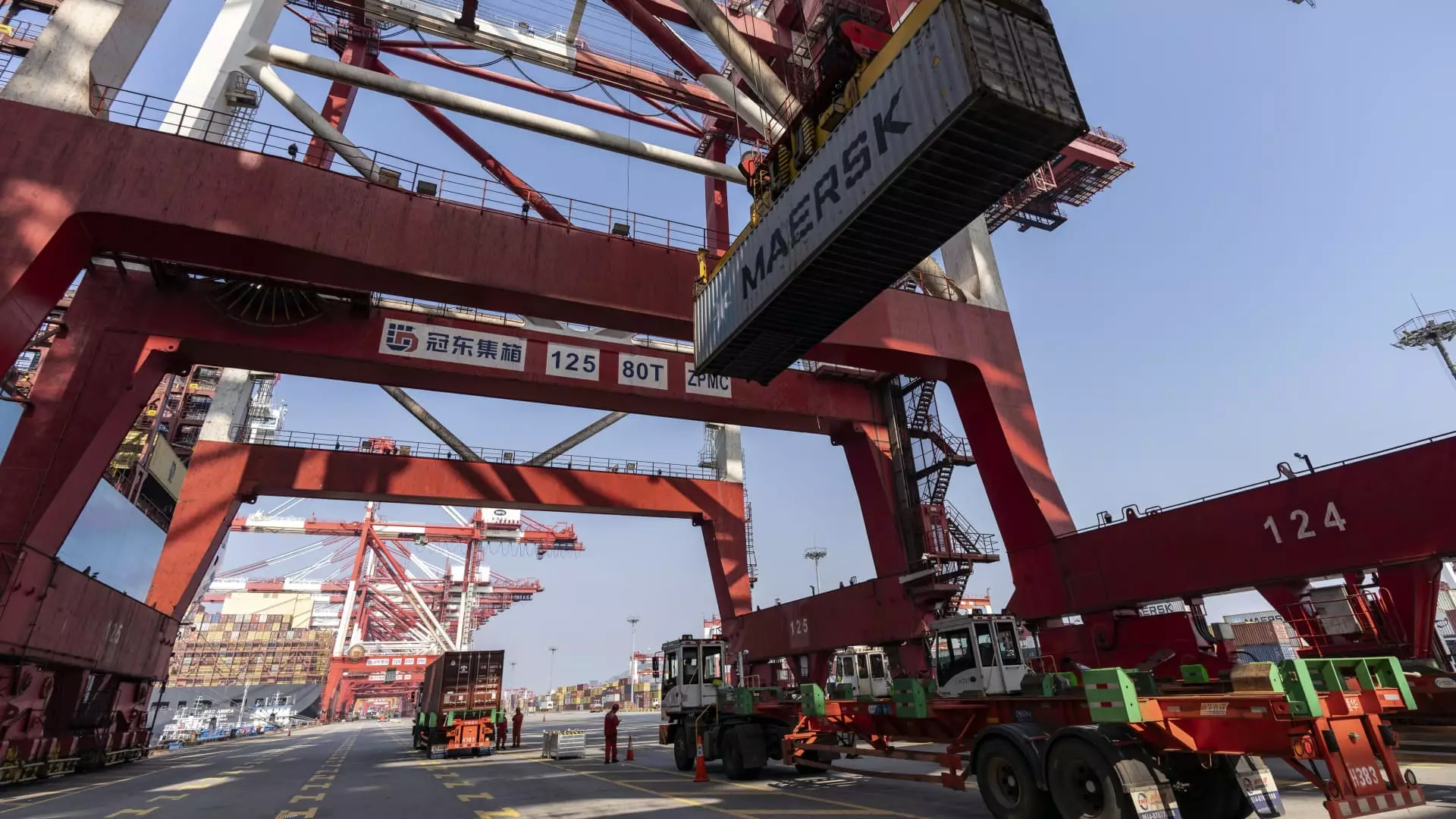In recent months, China’s economic landscape has been closely monitored due to its implications for global markets. The latest customs data from September 2023 has sparked renewed discussions about the resiliency of China’s export and import sectors. As the world’s second-largest economy grapples with various internal and external challenges, the figures released offer key insights into its current economic health and future trajectory.
September’s statistics reveal that both exports and imports fell short of market expectations, a development that has raised alarm among economists and analysts. Exports rose by just 2.4% in U.S. dollar terms compared to the previous year, while imports increased minimally at 0.3%. These figures stood in stark contrast to predictions, which forecasted a more robust 6% growth in exports and a 0.9% uptick in imports.
The implications of these disappointing results are multifaceted. Exports have historically served as a critical engine for China’s economic growth, yet the sluggish figures indicate that the nation may be entering a more challenging economic phase. The ongoing real estate slump and tepid consumer spending continue to weigh heavily on economic activity, with external pressures exacerbating these issues.
Heightened trade tensions, particularly with the United States and the European Union, further complicate China’s efforts to maintain export growth. Tariffs imposed on a range of goods, including electric cars, have stymied potential gains. In particular, China’s exports to the U.S. saw a modest increase of 2.2% in September, alongside a 6.7% rise in imports from its largest trading partner—insights that underscore the delicate balance of imports and exports amid altering trade dynamics.
Economist Zhiwei Zhang articulated the significance of fiscal policy adjustments in this context, suggesting a need for robust fiscal support to stabilize the economy. The Ministry of Finance’s recent indications to increase the fiscal deficit may hint at attempts to bolster growth, yet the specifics of this support remain vague, leaving market participants with lingering uncertainty.
On a regional basis, China’s trade ties with the Association of Southeast Asian Nations (ASEAN) demonstrated relative strength, with exports to this bloc rising by 5.5% and imports by 4.2%. These figures highlight the importance of maintaining collaborative relationships within the region, even as growth slows elsewhere. However, trade with other partners like the European Union, which saw a 1.3% increase in exports but a decline of 4% in imports, reveals a complex picture.
Moreover, China’s trade with BRICS nations showed contrasting trends with exports to Russia soaring by an impressive 16.6%, but imports declining by 8.4%. Such disparities reveal underlying strategic shifts in China’s trade policies, reflecting its efforts to diversify trading partners in response to economic pressures from traditional partners.
Sector-specific performance data offers further insight into the broader economic landscape. Growth rates for exports of automobiles decelerated to a 25.7% increase year-on-year, while categories like shoes, toys, and smartphones exhibited declines. Contrasted with growth in commodities like home appliances, integrated circuits, and ships, these variations in sector performance point towards changing consumer demands and international competitiveness.
Furthermore, signs of domestic demand shortages are manifesting. Notably, crude oil imports dropped significantly by 10.7% in September. This decline indicates waning demand despite a rebound in natural gas and coal imports, potentially related to Beijing’s strategic focus on securing food supplies and essential materials, particularly rare earths.
As these trade figures circulate, they paint a broader narrative reflecting challenges in domestic consumption. Recent data showed paltry growth in the core consumer price index, signaling potential deflationary pressures and cautious consumer sentiment. This subdued performance, coupled with falling tourism-related prices despite recent holiday activities, highlights the fragility of recovery efforts.
In parallel, the impending release of third-quarter GDP data is eagerly anticipated, as investors seek signs of stabilization in economic performance. The mixed signals of trade data juxtaposed with stimulus measures illustrate the complexity of navigating a landscape fraught with both opportunities and challenges.
In sum, September’s trade data reveal a challenging economic environment for China, reflecting a mixture of missed expectations, trade tensions, and sector-specific variations. As authorities grapple with the dual pressures of sustaining growth and managing external relationships, the path forward remains uncertain. Investors and policy makers alike will be closely watching future developments as they strive to navigate the complex interplay between domestic conditions and international trade dynamics. The broader implications of these trends will undoubtedly influence not only China’s economy, but also the global economic outlook.

